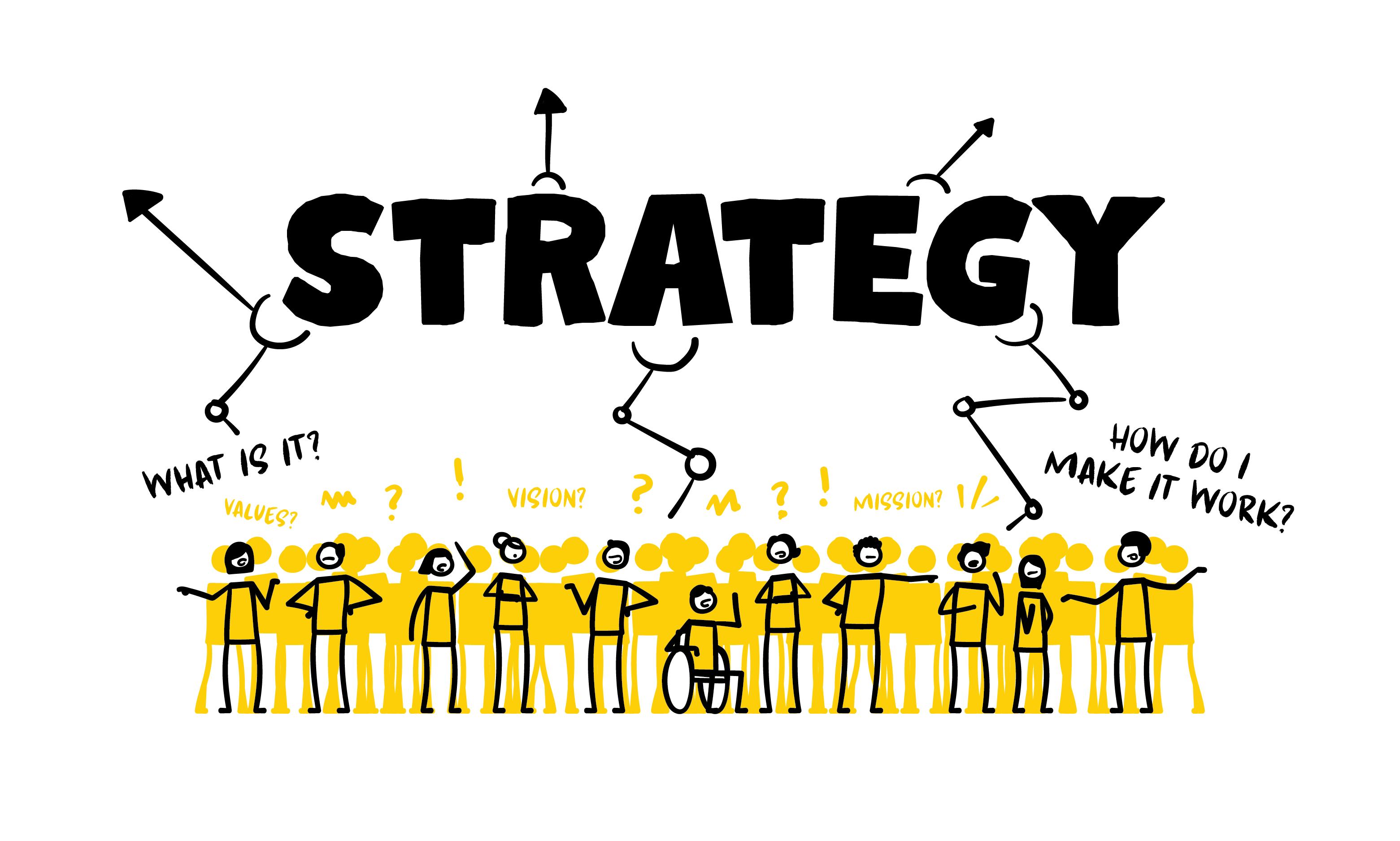(This is Part 1 of our series on organizational strategy. Part 2 of this series, “Two Fun Ways to Get Your Strategy Off the Ground,” offers solutions for making strategy work.)
Recently, I’ve had several conversations with friends at high-growth companies who have asked me variations of the question, “What is strategy?”
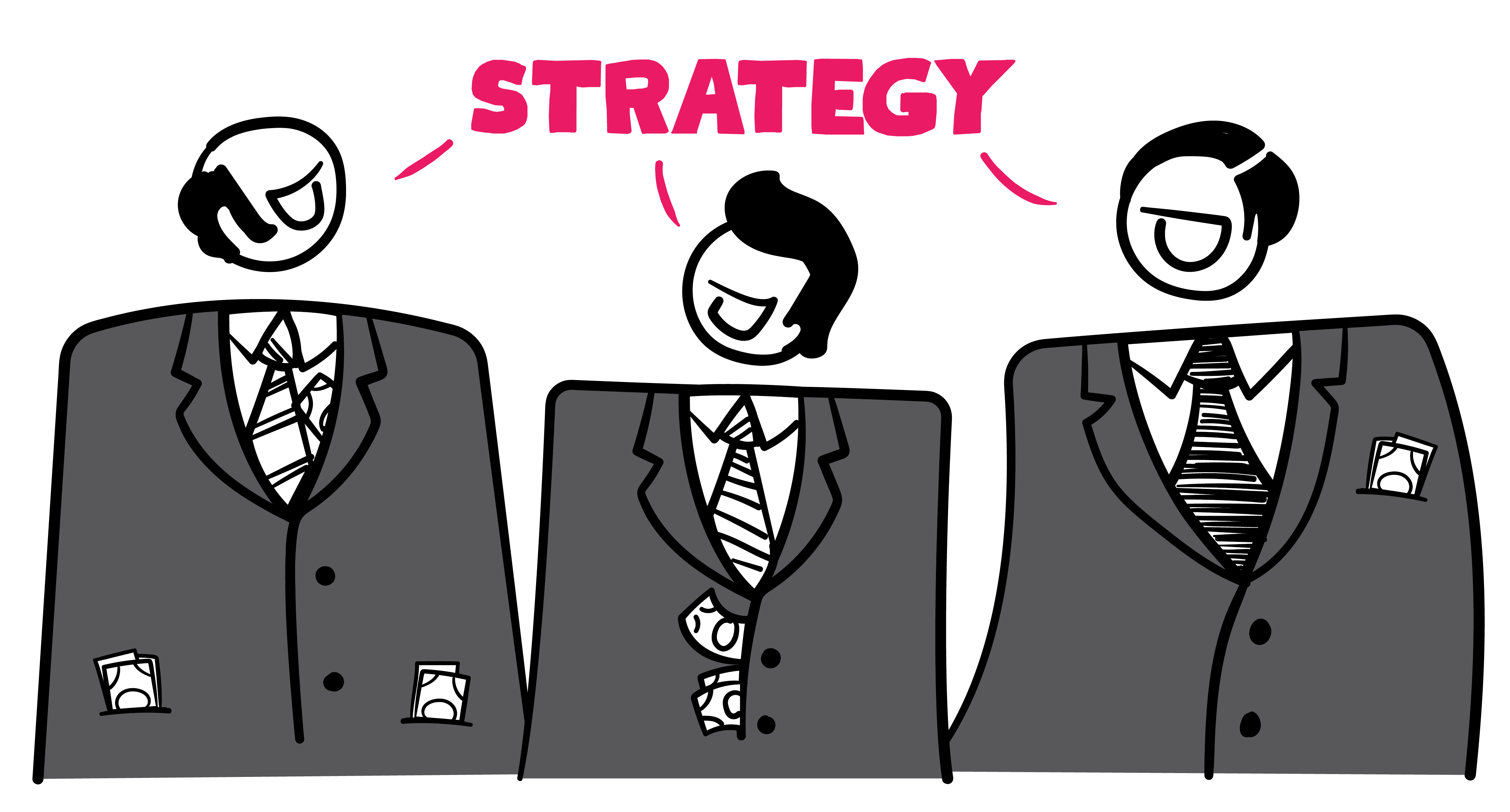 One friend shared that the word conjures up images of 1980s strategy consultants in shoulder-padded, double-breasted suits, telling them how to run their business when they don’t even understand the rapidly changing needs of the customer.
One friend shared that the word conjures up images of 1980s strategy consultants in shoulder-padded, double-breasted suits, telling them how to run their business when they don’t even understand the rapidly changing needs of the customer.
This is not strategy.
Other definitions equate strategy with ambition, leadership, vision, planning, and the economic logic of competition.
Strategy is none of these!
What Is Strategy, Really?
In simplest terms, strategy is a chosen path to a destination.
Another way to think about strategy comes from Forbes.com contributor Ann Latham, who writes, “Strategy is a framework for making decisions about how you will play the game of business.”2
Strategy doesn’t answer all the questions required for implementation—that’s planning—but it clearly establishes the game you are playing and how you expect to win.
XPLANE’s Framework & Terminology
At XPLANE, we see strategy as part of a larger framework consisting of an organization’s mission, vision, and behaviors and values.
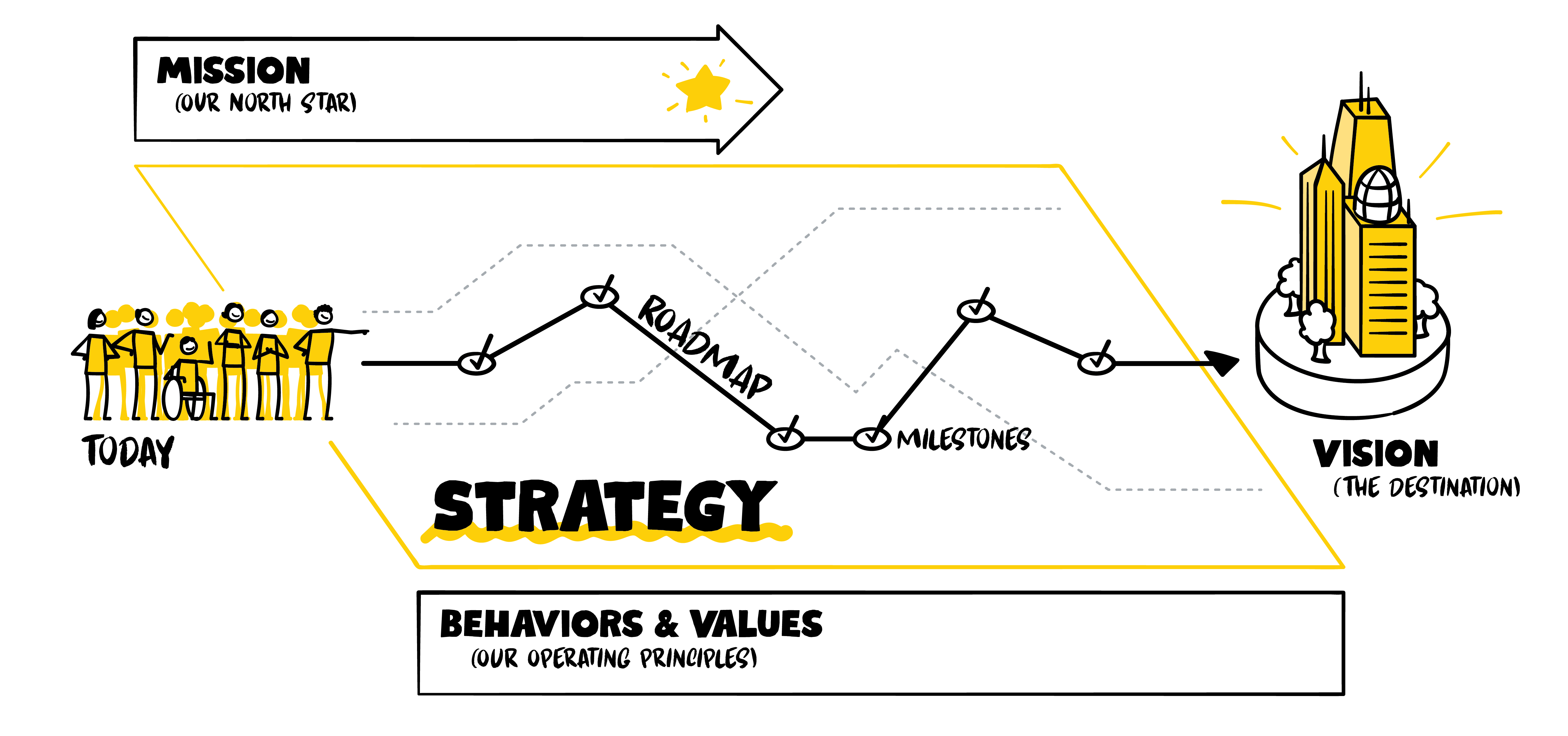
In the above framework, mission is our north star, our compass, our enduring purpose for being, the reason our organization exists beyond simply turning a profit. This should never change.
Vision is our destination, where we want to be in a given time frame. This is a long-term goal that we revise and renew over time.
Strategy is the roadmap—consisting of milestones and actions—that charts a path to achieving a company’s vision.
While there are often many ways to achieve a vision, strategy is made up of those we choose to implement. We adjust our roadmap to manage unforeseen obstacles and challenges and keep us moving toward our destination.
Our behaviors and values convey our operating principles—the interactions, attitudes, and practices that unite us as a team—and capture how we engage with one other during our shared journey.
The Difference Between Good Strategy and Bad Strategy
Strategy, then, encompasses the big decisions that allow an organization to make cohesive plans and work toward mutual objectives. But what makes a strategy effective (or “good”) versus ineffective (or “bad”)?
Airbnb: Modeling Good Strategy
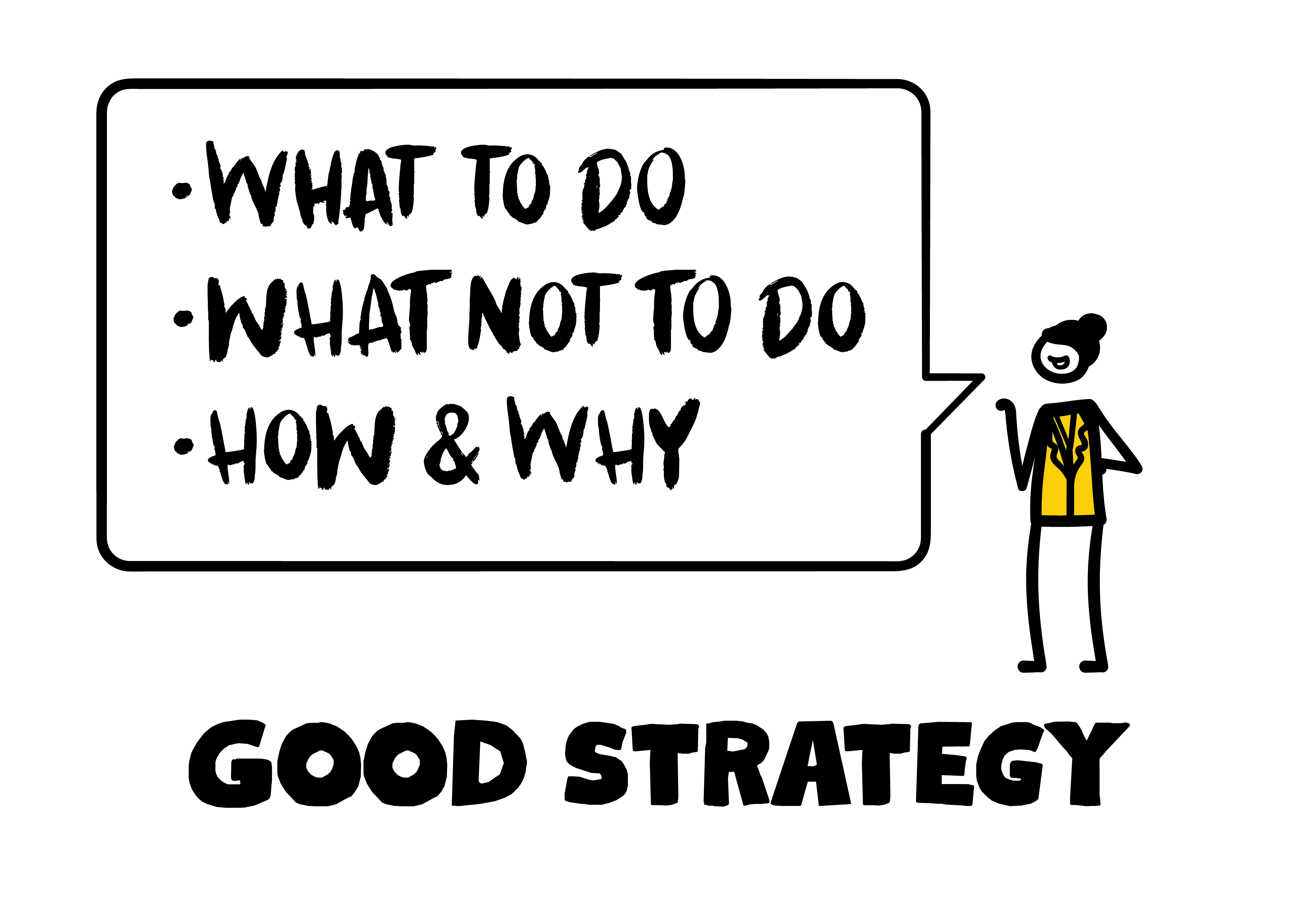 Good strategy involves more than “what” you are trying to do. It is also “why” and “how” you are doing it, within the context of the terrain you’ll be moving through.3
Good strategy involves more than “what” you are trying to do. It is also “why” and “how” you are doing it, within the context of the terrain you’ll be moving through.3
Airbnb’s motto, “A Community Built on Trust” is also a core business strategy. The organization clearly states what they want to achieve by publishing their list of Community Standards. They actively build processes to leverage the community to identify bad actors, and they act on that data regularly by removing thousands of hosts from the platform each month.
Because Airbnb’s strategy adapts to customers’ changing needs and experience in real time, it’s a strategy that adapts to changing terrain.
This raises an important point: Strategy is as much about what an organization does not do as it is about what it does. Good strategy demands leaders willing and able to say no to a variety of actions and interests.
Blockbuster: Ignoring the Changing Terrain
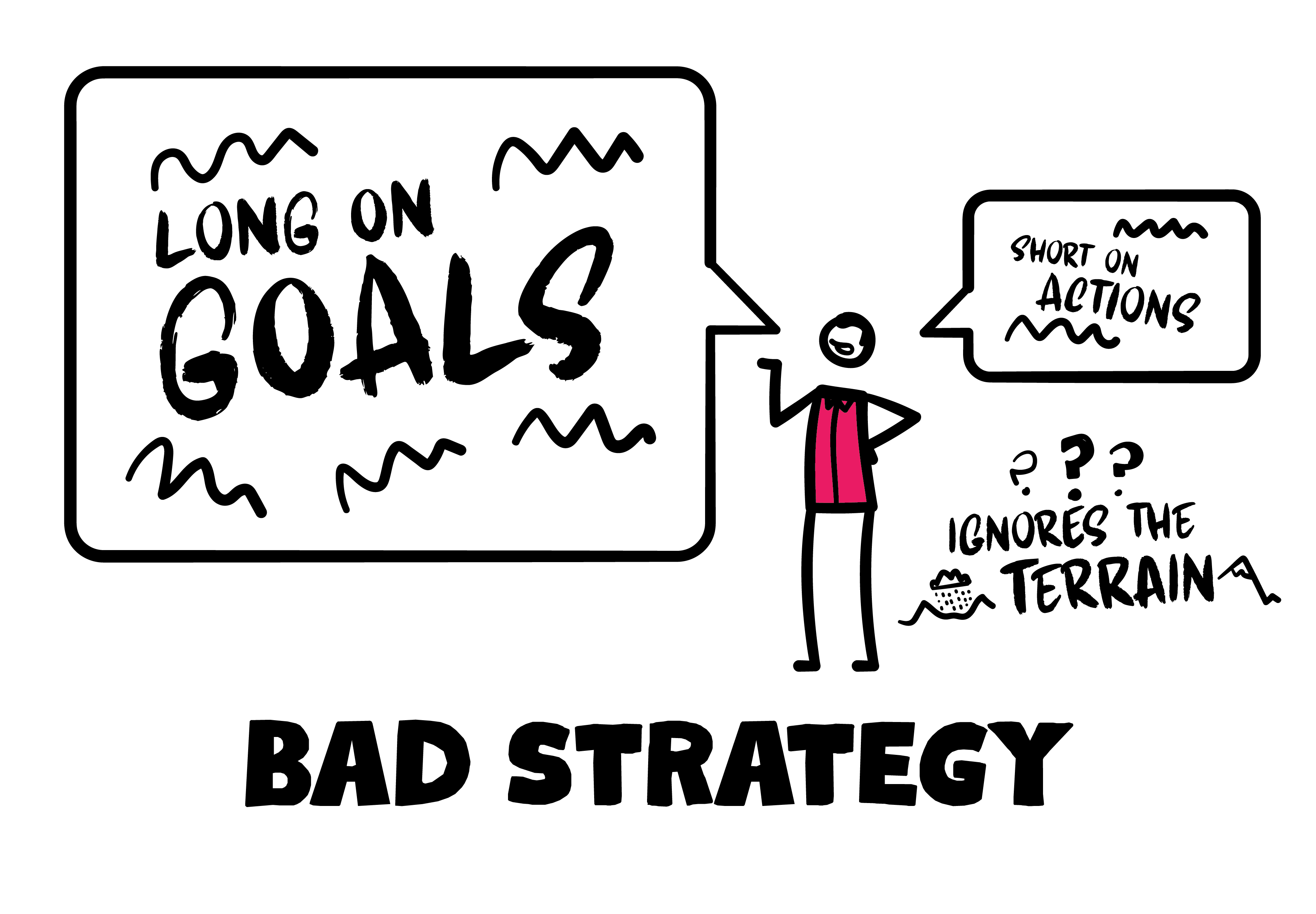 By contrast, bad strategy is long on goals and short on action—and worse yet, ignores the terrain you’re going to be moving through.3
By contrast, bad strategy is long on goals and short on action—and worse yet, ignores the terrain you’re going to be moving through.3
Bad strategy:
- assumes goals are all you need
- presumes tomorrow’s landscape will look like today’s landscape
- puts forward strategic objectives that are incoherent and not relevant to changing conditions
Remember Blockbuster?
In the early 2000s, the movie rental giant generated more than $300 million annually in late fees—often more than their total annual operating profit. The company held fast to this strategy despite the changing terrain ushered in by emerging competitors, like Netflix, that did away with late fees.
We know how that ended.
The Confusion About Strategy
In 25+ years of conducting strategic planning with Fortune 500 companies, it’s remarkable how often we at XPLANE see business strategy—intended to clarify and direct an organization’s collective action toward a desired outcome—deliver just the opposite: confusion and inaction.
Organizations spend approximately $38 billion annually on strategy consulting, but when you add internal time and expense spent planning, executing, and reworking strategy, this number drastically increases.
Yet for all this investment in strategy consulting, 80% of corporate strategies fail.
To learn more about how to make your strategy work, check out Part 2 of this blog series, “Two Fun Ways to Get Your Strategy Off the Ground.”
1“The Office of Strategy Management.” Robert S. Kaplan and David P. Norton. Harvard Business Review. October 2005.
2 “What the Heck Is a Strategy Anyway?” Ann Latham. Forbes. October 29, 2017.
3 Rumelt, Richard. (2011). Good Strategy Bad Strategy: The Difference and Why It Matters. New York, NY: Crown Business
Need help defining, communicating or implementing your strategy?We’d love to help! Send us a note to discuss partnership opportunities. |
Interested in learning more about strategy? Below are some XPLANE blog posts we recommend.
